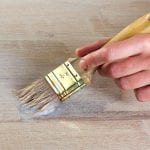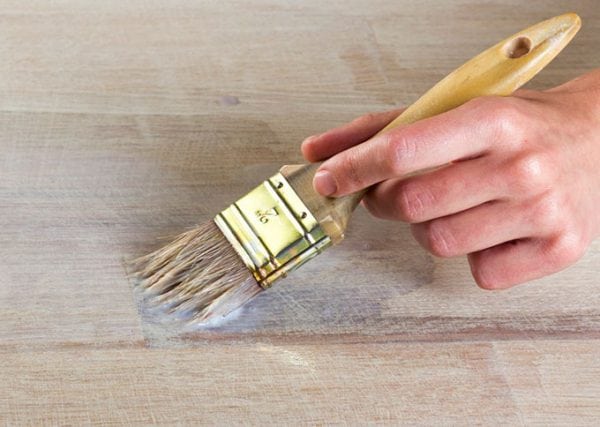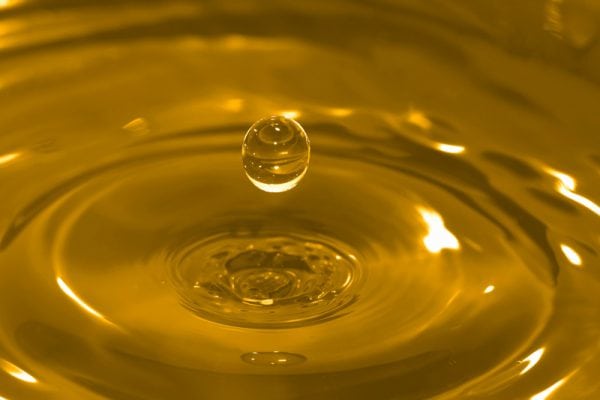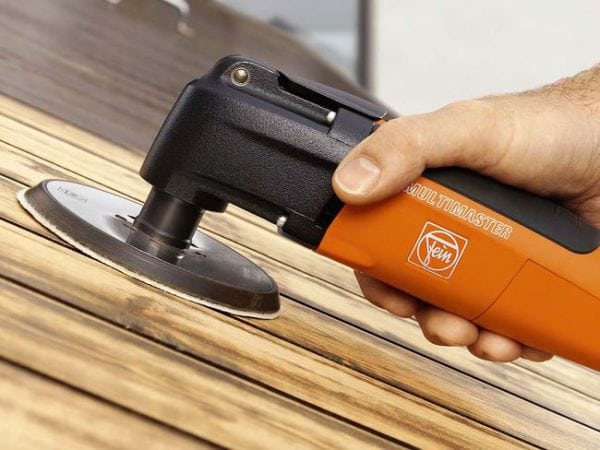Acrylic varnishes for wood on a water basis have gained distribution not so long ago, and immediately gained wide popularity. The reason for this: paints and varnishes (LKM) with the addition of water and acrylic have a number of advantages in comparison with other types of varnish.
- Components of acrylic varnish
- Benefits
- Application features
- Instructions for varnishing wooden surfaces
- Useful Tips


Components of acrylic varnish
Water based acrylic lacquer is a mixture of water, a binder, and additives. All components are redistributed in the water evenly - in small drops - using a high speed agitator.
The production process is similar to kneading dough: a binder and emulsifiers are placed in water. Then stirring begins, up to the moment when the mass becomes homogeneous. Then a solvent can be added, which acts as a film former. Exactly the presence of a film is one of the characteristic features of acrylic coatings. First of all, the water dries, then the film-forming composition. Lastly, the bonding element dries.
The composition of the paint material includes such substances:
- liquid polymer (acrylic dispersion);
- wood preservative;
- plasticizer - a substance that gives the varnish plasticity and elasticity;
- solvents (not always contained, but if they are, their proportion can be from 5 to 15%);
Acrylic varnishes can be produced in two versions:
- one-component, where only acrylic is present;
- two-component, in addition to acrylic, polyurethane is added.
Note! To preserve paintwork materials and their properties, the room must be heated.
Two-component varnishes are characterized by higher consumer properties. Polyurethane gives the surface the ability to resist certain harmful effects, for example, increased loads, spilled alcohol or household chemicals.

Benefits
Acrylic based coatings have a wide range of positive characteristics:
- resistance to mechanical influences - scratches, friction, loads;
- moisture resistance (when added to the composition of polyurethane);
- resistance to household chemicals and alcohol-containing substances;
- good indicator of adhesion and spreadability;
- thermal stability;
- fire safety;
- normal thermal conductivity;
- quick drying;
- moderate, barely perceptible odor;
- environmental friendliness;
- resistance to the appearance of mold and all kinds of microorganisms;
- Compliance with regulatory standards in terms of "Toy Safety", which means that acrylic varnish can be used in children's rooms;
- good alignment, preservation of the natural color of the tree, without darkening;
- the absence of spots (due to the presence of tannins in the inhibitor), which appear under the action of resins and tannins in wood;
- resistance to ultraviolet rays, which are not able to make the varnish film turn yellow;
- attractive appearance;
- ease of application to the surface;
- good contact with clean surfaces when applied;
- miscibility with water soluble paints;
- water solubility persists until dry;
- light weight.

Application features
Water-based varnish can be used not only for the treatment of wooden floors (parquet or solid wood), but also for varnishing other wood structures, such as doors and windows. The only limitation is that it is necessary to withstand temperature conditions (from 18 to 20 degrees Celsius) and humidity (up to 50%).
to contents ↑Note! If the temperature is too low, the varnish dries much longer and with less efficiency. If the room has reduced power, you can correct the situation with a humidifier, decorative flowers, or other available methods. Excessively dry air will dry out too quickly and cause surface defects.
Instructions for varnishing wooden surfaces
If the tree has previously been varnished, it is necessary to remove the old layer of varnish. This can be done in several ways: using chemical composition, mechanical (manually or grinder), or thermal (building hair dryer) methods.

After removing the varnish, the floors must be cleaned with soapy water and allowed to dry. However, it is too early to varnish the floors, first you need to prime the surface - the so-called base. Usually, the primer is sold in the same place as the paintwork. Experts recommend applying at least two coats of primer.
Acrylic varnish is also applied in several layers - sometimes their amount can reach 5-8. This indicator depends on the thickness of the lacquer layer, the quality characteristics of the paintwork, as well as the planned coating strength. Acrylic varnish for wooden surfaces, like all other types of water-based coatings, is recommended to be applied with rollers.
to contents ↑
Useful Tips
- Shake and mix well before using coatings.
- No solvent should be added to the finished composition - only water.
- Acrylic varnishes can be matte or glossy.
- Before varnishing, it is advisable to check the compatibility of a specific coat of paint and varnish. This can be done somewhere in an inconspicuous place, for example, under furniture.
- High-quality drying is not possible with drafts or direct sunlight.
- In the late stage of drying, when the varnish seems already dry, it is better to walk on the floor in soft shoes or socks.
- To prevent damage to the surface, felt pads should be worn on furniture legs.
- To eliminate the formation of bubbles or defects, the penultimate layer must be lightly sanded or cycled. Next, you need to apply one or two layers of varnish on top.
- The technology involves applying each subsequent layer no earlier than 12 hours. If the room temperature is too low or humidity is high, the drying time should be increased.
- If the goal is to achieve decorative effect, the most proven way is to apply two varnish layers on a primed surface.
- When working with paintwork materials, you need to use safety glasses and gloves.
- Acrylic varnish should be stored in sealed original packaging. Optimum temperature: 5 to 30 degrees Celsius.
A large number of companies are represented on the market, both Russian and Western. The choice of a particular brand of acrylic varnish for wood often depends on a commitment to a particular manufacturer or on the price of the goods.





Hello. Please tell me how you can cover the euro lining on the balcony so that it shines if it was initially impregnated (water is included in the composition). The sellers in the store said that there was nothing :-(